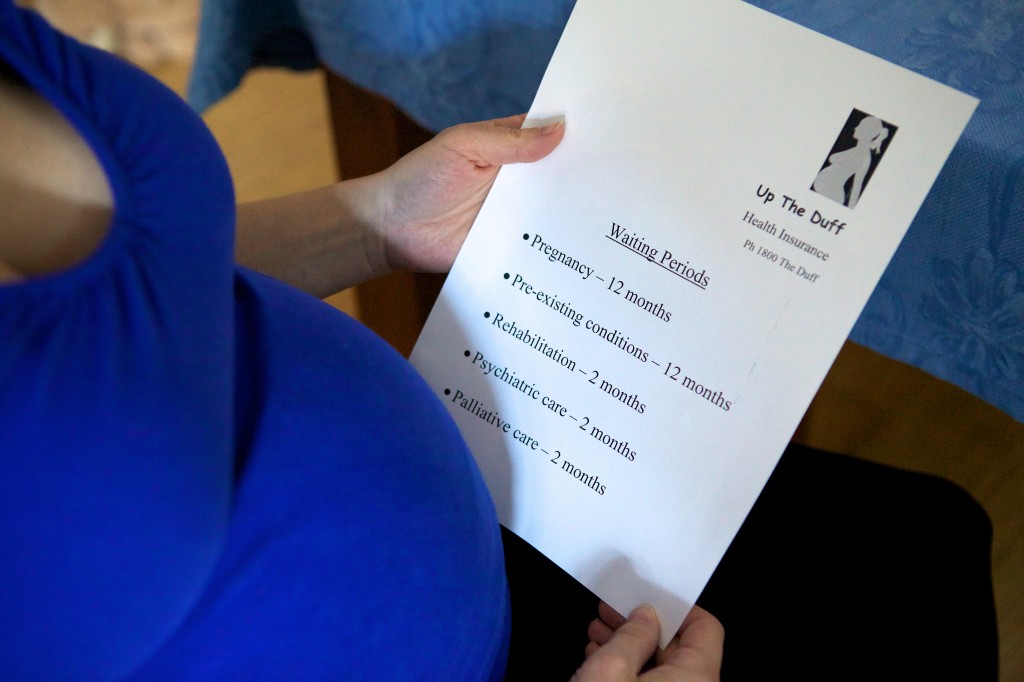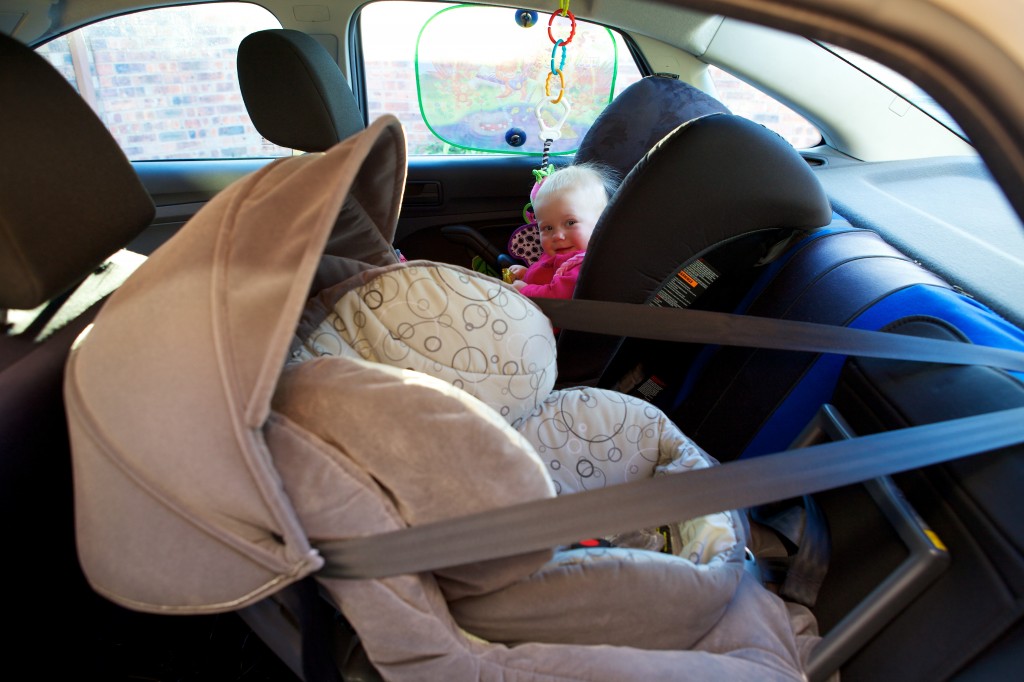Getting Pregnant
Sorry gentlemen, there are no videos or links to adult websites under this heading (I’m assuming you already know how to do the deed, and I don’t want you to get distracted).
Fertility treatments and health insurance
Ignoring the cost of wining and dining, the first step in having kids will likely be the cheapest parent-related thing you ever do. That is, if you can fall pregnant naturally. Infertility affects a massive 9% of the population and fertility treatments can cost extraordinary amounts of money, although Medicare does cover some of the cost. If you have high levels of private health insurance you may find that the out-of-pocket costs will be lowered, but you do need to get an idea of how much you’re looking at before you start any fertility treatment – contact your health insurance provider to find out what they do and don’t cover.
Case Study: Jody’s IVF story
Brendan and I married and pretty much started trying for a baby straight away (we had been together for 5 years, owned our home, had secure jobs and did everything the ‘right’ way). I was 28, Brendan was 27. Nothing happened. One by one all our friends fell pregnant and I became more and more angry. I refused to go to any baby showers, and my friends were terrified of telling me they were expecting because I would just break down, cry and refuse to speak to them. Brendan was really strong but he watched me declining in the biggest possible way. After all I figured it was my ‘job’ to have kids, and if I couldn’t, it meant he couldn’t, and he had always told me it was his biggest dream to become a father. I even considered leaving him so that he could find someone else.
The first appointment with the IVF doctor was terrifying. As I was under 30 when we saw him, he was reluctant to start with IVF. So we were put through all other types of treatments that didn’t work and arrived at IVF pretty darn quick. I learned how to inject myself with the fertility drugs, and taking so many of those drugs I could hardly think straight. At one point, I told my boss to go and f@#k himself – and I love my boss.
So we were booked in for our first egg pickup. I went under with so much excitement and woke up to find they had gotten two eggs. The average egg pickup gets about 15. I was told I had limited capacity to produce eggs and those I did have were ‘crap’. We managed to get one fertilized – he popped it back and I waited… I didn’t need confirmation from the phone call. I knew it hadn’t worked. I had to take a week off work because I couldn’t function with the loss. The first IVF treatment cost us $7,000.
Of course, we launched straight back in – no break. I had to do the whole egg pickup thing again from the beginning. This time they got only one egg. It didn’t fertilise. Round two – another $7,500.
I decided I no longer cared if I could have kids or not (not really) and Brendan and I went to Fiji for a week. We drank too much, ate too much and drank Kava until we spewed. I got my period when I was over there, and thought “Bugger it, let’s give it one more shot – and I won’t invest any emotion into this go”. So we got off the plane and launched ourselves back into it for one last time.
I went in for the egg pickup and we got two eggs of extremely poor quality. The doctor didn’t want to use them at all, one died before we even got back to the clinic. But he figured we had nothing to lose. This time they injected the sperm into the egg rather than letting the egg fertilise naturally. It worked, but it didn’t grow. We went home devastated and started to think about life without children.
The scientist on staff called us the next day. The embryo had survived the night, but wasn’t growing at the right rate. He said he’d just keep an eye on it, but not to get our hopes up. But every day it grew a tiny little bit bigger. They ended up growing our embryo in the lab for seven days during which time it started growing like a champion! At 150 cells, they decided to put it back!
Three days later I knew I was finally there! I did a pregnancy test at 10 days and saw a faint blue line appear!
Because they had to grow the embryo in the lab we were hit with another nearly $10,000.
Nathanial was born in July 2007 and proved to be the baby from hell. It’s like he was so damn angry for being born – but he was here. We were told we would never get pregnant again, but to come back and try again in January when I would still be ‘relatively fertile’. Eight weeks later I knew I was pregnant again and, one day before my 33rd birthday, Flynn was born in July 2008.
Would I do it again – no way! But I’m glad I have my boys. It was the biggest most emotionally challenging thing I have ever done. Brendan and I are a very strong couple, but it was nearly the end of us, and we know lots of couples that it has broken. We were lucky we both had great jobs and a home we could sell to fund it. I feel for the couples that can’t afford to do it!
We had seven fertility treatments, all up costing a total of $45,000. Only three of them were IVF.
Nathanial (standing) with his brother Flynn. Nathanial is one of the 12,000 born as a result of IVF in Australia every year.
You need to take into account the waiting periods for certain treatments if you decide to start or upgrade an existing private health insurance policy. For example, it is fairly standard for private health insurance to have a 12 month wait before it will pay any costs related to childbirth. So you want to make sure that you hold the appropriate cover for at least four months before you start trying for a baby. If you’re doing the maths, you would be wondering how four months waiting period plus nine months pregnancy makes 12 months total. Babies never do what you want them to, including arriving when you expect (only between 2-5% of babies are born on their due date). If you take out obstetrics cover three months before you fall pregnant and the bub arrives early, you will not be covered for the birth.

It’s a bit late to be reading this now.
Not that relying on Medicare is a bad thing. In fact if you go public instead of private it will cost you up to several thousand dollars less. You just won’t get to choose who treats you and will probably end up sharing a room. That’s sharing a room after delivery, of course.
Back in the communist times in East Germany, women shared a room during labour. Have some light contractions and you would end up in a room with as many as six other labouring women. Just as the baby was about to arrive, the medical staff would whisk the mum-to-be off to a separate room, leaving the first-time mums still in the early stages of labour behind, absolutely shitting themselves for what was to come.
One of the advantages of having private cover when pregnant is the continuity of care. You will get to see the same professionals throughout your pregnancy and during the labour. Going public means that there may be many different faces that come into the birthing suite as the midwives’ shifts change and labour drags on.
One way of getting the best of both worlds (the continuity of private care with the free service of public) is to agree to have a student midwife follow your progress. The student (most likely studying in their first or second year) will likely be required to attend all your antenatal visits, be present for the labour, deliver your baby then follow up with a couple of postnatal visits as well.
Agreeing to have a student midwife follow your pregnancy is no guarantee to being allocated one, but if you are lucky enough to have one the experience can be mutually beneficial.
Single women and same sex couples wanting fertility treatment will have to have a few more bucks set aside. It seems that unless you have a medical cause for your infertility, Medicare will not help out with the cost. I can only imagine how tough it is for a single woman to raise a child, let alone having to pay thousands to get pregnant as well. Single women living in NSW can access the Affordable IVF Initiative that gives rebates of up to $2,000
Setting aside all the arguments for having children, and that for some people it is the most important thing they could ever do in their lives, I would strongly discourage you from going into debt to have a baby. If spending tens of thousands of dollars to fall pregnant or adopt a child from overseas is on your list of goals and you save up for it first, as I stated earlier in the course – it’s your money and you can spend it on whatever you like. Actually, I can hardly think of anything better to spend money on. But going into debt to start a family is not good. Especially when the baby arrives and you find the stress of several IVF treatments, or visits to an overseas adoption agency, is replaced by the combined stress of debt and parenting.
The really sad irony about so many couples who go through years of fertility treatment is that just as they give up and accept that they will never have children they suddenly find that they fall pregnant naturally. Happiest moment ever, sad that they had to endure so much emotional roller coaster ride and expense getting there. It is likely that the stress associated with the cost of treatment is a contributor to not being able to fall pregnant. You can lower that stress by avoiding debt.
Baby budgeting
It is no secret that a baby will have a larger impact on your budget than just about any other ordinary life event. Not only do you face an increase in costs, but most people will be hit with the double whammy of a lower income as well. Even if you have never budgeted before, and even if you decided to skip the Budgeting topic earlier, looking at possible scenarios and drawing up a rough budget should be something you do before you get pregnant. The earlier you get your head around how much things will change, the better the stress on your cardiovascular system will be.
It is easy to be so focused on everything baby related before and during pregnancy that thoughts of your income and expenses get pushed to the background. The sooner you can start living as though the baby has already arrived, the more you will save and the easier the eventual transition to parenthood will be.

We comfortably fitted two baby seats in the back of Claudia’s old Ford Focus.
One thing you probably won’t need to factor in to your budget is a new car. Most cars can fit a baby seat, and despite the impression you may get by seeing the full ‘parents with prams’ parking spots at the shopping centre, you do not need to buy a new 4WD when you have a baby. The bigger your car, the less space there will be between your car and the one parked next to it. Kicking and screaming toddlers require their parents to have the most amount of space next to the car as possible to strap them into the baby seat. And it also means your smacking arm can have a bigger back swing.
Next Sub-topic: Being Pregnant >>

